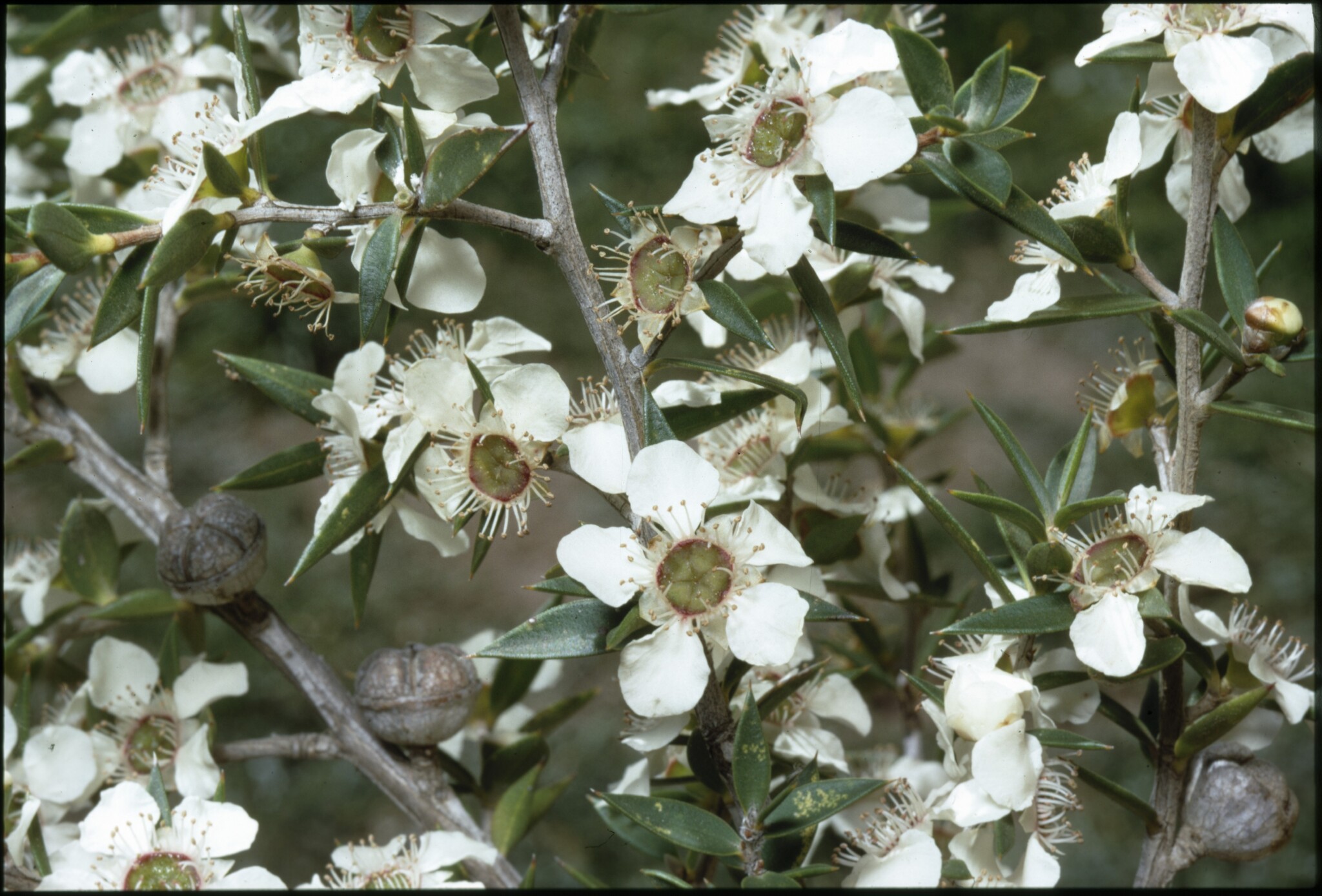
Greek leptos — slender, sperma — seed, referring to the narrow seeds of the type species.
Shrubs or trees with fibrous or papery bark. Leaves alternate, mostly small and stiff with entire margins, stalkless or shortly stalked. Flowers solitary or few together, stalkless, 5-parted. Petals white, occasionally pink or red. Stamens numerous, shorter than the petals, in 5 bundles opposite the petals but appearing free; anthers opening by slits. Ovary 3-5-chambered. Fruit a 3-5-valved woody capsule.
Grown for a range of landscape uses as groundcover plants, hedges, and for the papery bark and floral display. A few species have shown a tendency to become weedy.
The common name derives from the use of the leaves of L. scoparium as a tea substitute by Captain Cook's crew.
About 82 species, mostly Australian but 3 species found in Indonesia and SE Asia, Borneo and New Guinea.
Seed or cuttings.
Paper bark used for bark 'paintings'; Aborigines have used the wood for spears, and lemon-scented species are occasionally used to make tea-like beverages. L. scoparium cultivars are used as cut flowers.
Leaves alternate; stamens mostly shorter or hardly longer than the petals, shortly united into 5 bundles opposite the petals but often appearing free; ovary of 3-5 chambers.
Thompson (1989), Wrigley & Fagg (1993).
Source: (2002). Myrtaceae. In: . Horticultural Flora of South-eastern Australia. Volume 3. Flowering plants. Dicotyledons. Part 2. The identification of garden and cultivated plants. University of New South Wales Press.

Other cultivars include A 'Bywong Merinda' PVJ 10(4)63, A 'Rhiannon' PVJ 8(4)49 and A'Aphrodite' PVJ 6(4)53.
This adaptable and wide-spreading prostrate cultivar has been considered a cultivar of both L. scoparium and L. continentale; it is said to have originated as a selection from near Portland, Vic, made by Austraflora Nsy in 1967. The dimensions of leaves and fruits examined would suggest L. scoparium as the parent.